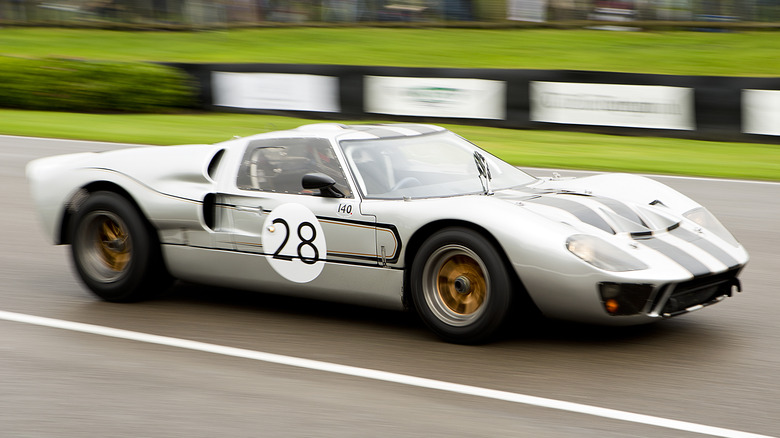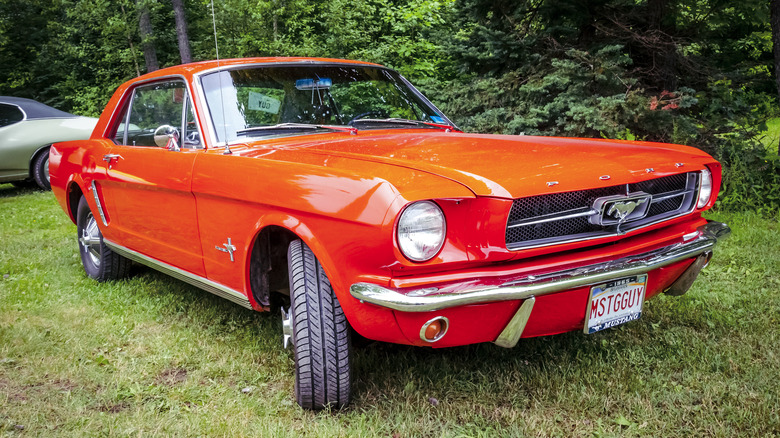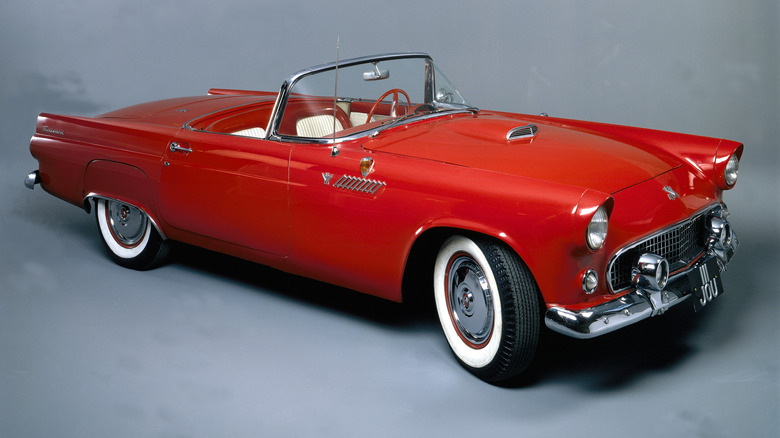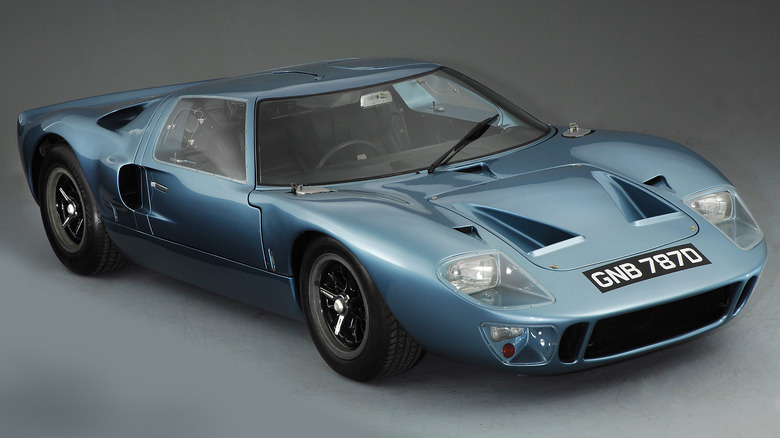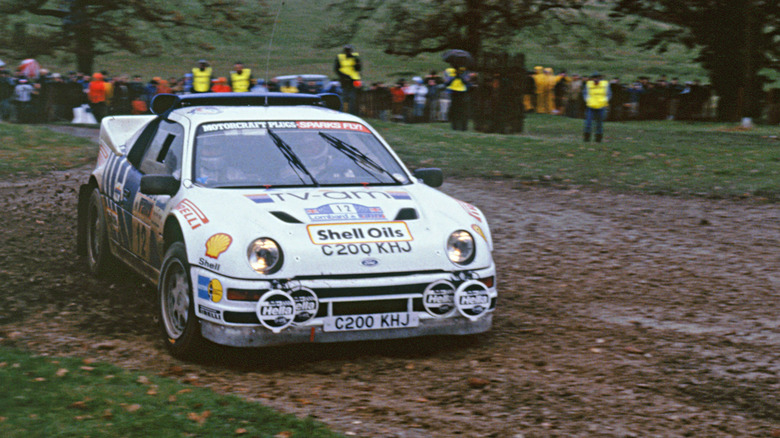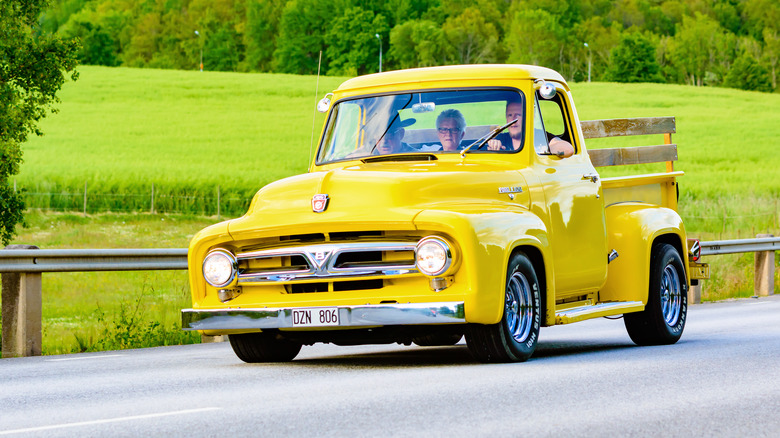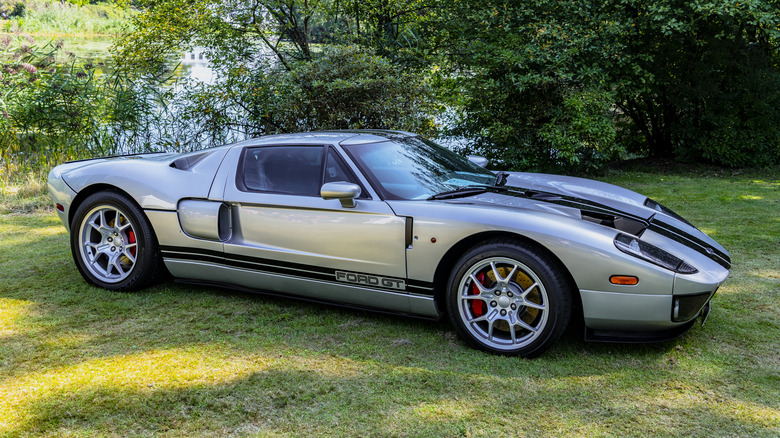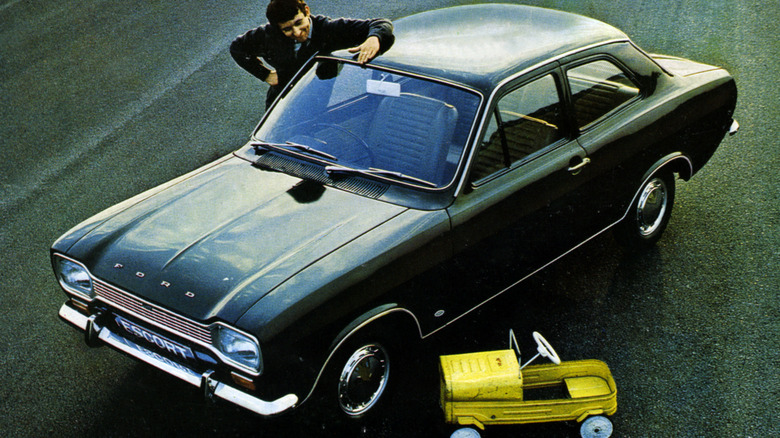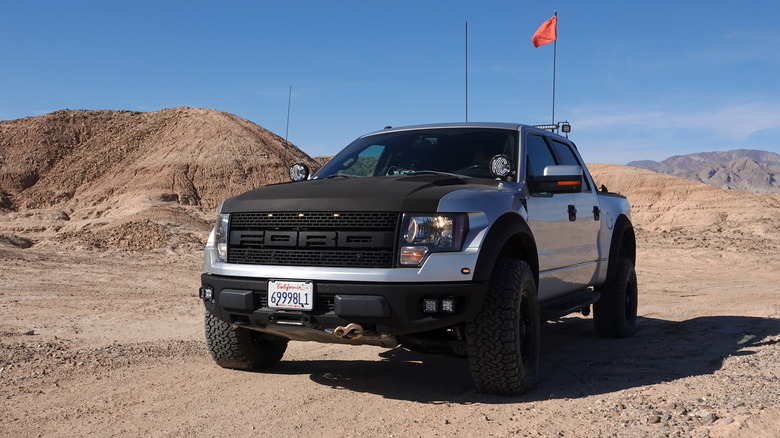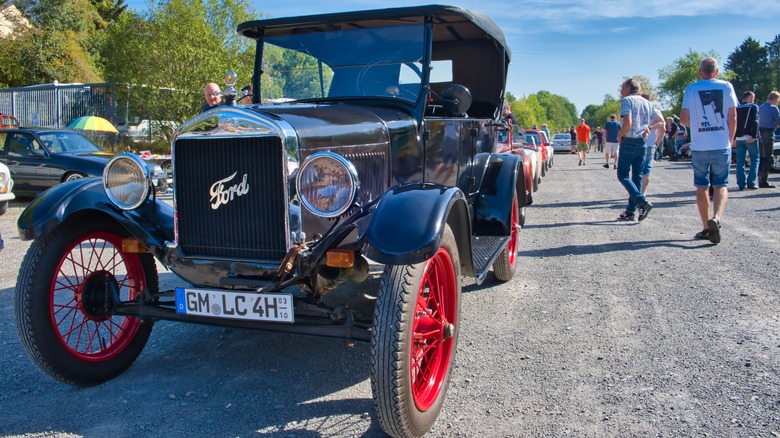The 10 Most Iconic Ford Models Ever Built
After 120 years in business, Ford Motor Company remains one of the world's largest carmakers, with multiple best-selling models in its current lineup. Its back catalog also includes a laundry list of iconic nameplates, many of which boast decades of production history and millions of units sold. Not every car the company has produced was a hit, however -– Ford has had its fair share of flops over the years too.
Like every other major manufacturer in the industry, Ford is currently in the midst of pivoting its lineup towards EVs, with several high-profile models like the F-150 Lightning and Mustang Mach-E already in dealerships. So, now is a great time to take a look back and round up ten of the brand's most iconic nameplates so far. Reducing the list down to just 10 is no easy task, and plenty of well-loved models narrowly missed the cut. To keep things simple, we've also excluded cars by Shelby and Lincoln here -– both of which have enough icons in their back catalogs that they deserve lists of their own.
1965 Ford Mustang
Almost 60 years after the first examples rolled off the production line, the Mustang continues to be the world's best-selling sports car. It was originally created as a result of Ford's research into the buying habits of the Baby Boomer generation, who were leaving college in the '60s and wanted a car that was both sporty and affordable yet still reasonably practical. The Mustang was designed to meet that untapped market, and it proved to be a huge success for Ford, with an estimated four million people flocking to showrooms to see the new car over its first weekend on sale.
The Mustang nameplate now spans seven generations, with the latest generation freshly launched for the 2024 model year. Even as rivals like the Chevy Camaro are retired in favor of a likely EV successor, the latest Mustang features no electrification options, such is Ford's reluctance to mess with the winning formula. However, the Mustang Mach-E electric crossover has controversially worn the iconic badge since its launch in 2021, marking the start of another chapter of the storied nameplate's history.
1955 Ford Thunderbird
After seeing Chevrolet's success with the two-seater Corvette, Ford hastily developed the Thunderbird, which went on sale for the 1955 model year. It shared a lot of parts with other Ford production cars, but its stylish looks and affordable starting price made it stand out from the rest of the lineup. In fact, it quickly outsold the 'Vette, although over the years, the two would eventually diverge away from being direct rivals.
The Thunderbird became Ford's luxury-focused offering, with a wider variety of body styles available after the initial run of two door convertibles from 1955 to 1957. After decades of production it was axed in 1997, before being briefly brought back in the early 2000s. The last Thunderbird left the line in 2005, with the iconic nameplate retired after 50 years.
Recent rumors pointed to a revival of the name with a new car targeted at taking on the upcoming electric Corvette, although for now, Ford has remained tight-lipped on its future plans.
1966 Ford GT40
The Ford GT40 is one of the most famous American race cars ever made, but it was originally built because of a grudge against Enzo Ferrari. In the early '60s, a tentative partnership had been formed between Ford and Ferrari to allow the American carmaker to enter GT racing, but Enzo backed out at the last minute, leaving Ford out of pocket. Henry Ford II then gave a small team of engineers orders to create a car that could beat the Italians, with the initial prototypes being developed in England and later versions built in a facility in Michigan.
The project had more than its fair share of hiccups as several key engineers quit halfway through and the car proved notoriously unreliable on the track. However, at Le Mans in 1966, the GT40 scored a decisive 1-2-3 victory, making Ford the first American manufacturer to ever take the top step of the podium. Today, original Ford GT40s often command seven-figure sums at auction, underscoring their importance as one of the brand's most important models ever built.
1991 Ford Explorer
American buyers today can't get enough of SUVs, and the Ford Explorer played a key role in starting that market shift. According to Ford, the Explorer is the best-selling SUV of all time in the U.S., with the model first launched in the 1991 model year and remaining in continuous production ever since. Like many of the most successful Fords, the brand has kept the basic formula unchanged throughout those years of production: boxy, upright styling, a range of trims to suit all tastes and budgets, and plenty of space for a family and their luggage.
However, an all-electric Explorer was recently unveiled for the European market, and Ford has hinted that it may eventually also be launched in America. If it does launch stateside, it would mark the most drastic change to the Explorer line since it was first released, although it's unlikely to replace the gas-powered bestseller outright anytime soon.
1986 Ford RS200
Ford has a long history with rallying, although ironically the RS200 never got the chance to prove its worth in competition. It was designed to compete in Group B, but a series of tragic accidents saw the category unceremoniously canceled. Ford had barely finished work on the first iteration of the RS200 when the news broke and was left with a problem -– a batch of hastily-assembled cars, but nowhere to race. The 200 road-going cars were sold off, with some ending up competing in rallycross competitions, while the planned race cars were mostly kept as parts.
Despite managing unimpressive results on the few rallies it entered before Group B was axed, the RS200 has gained a reputation as one of the most iconic rally cars of its era. Unlike most other Group B cars, the RS200 was built from the ground up as a race car and was a world apart from anything else the company offered at the time. Its rarity and unique history have kept values ticking steadily upward in recent years, with the late Ken Block introducing the car to a new generation of motorsport fans with his Hoonigan-customized example.
1953 Ford F-100
The F-Series remains America's best-selling pickup truck line by a significant margin, with the first F-Series trucks appearing in the post-war years. The F-100 was the first to really capitalize on the trend of Americans using their trucks for everyday driving duties, offering increased comforts like sun visors and armrests. It was a huge hit, although it's tough to find one in original condition today -– most have been worked into the ground, modernized to some degree, or modified.
The second-generation F-Series truck was in production from 1953 to 1956, with later models gaining a wraparound windshield and other styling tweaks. Later successors added even more car-derived features, but today's most lavishly appointed trucks might never have been were it not for the success of the F-100. Like many of the best classic truck models, well-sorted examples of the F-100 are highly collectible, and the most pristine can command a significant premium on the occasion that an owner puts one up for sale.
2005 Ford GT
The spiritual successor to the GT40, the Ford GT was the brand's first true supercar in decades. Its design took clear influence from the '60s race car, but this was no simple homage -– the engineering underneath was cutting-edge and proved that Ford could still compete with the Europeans when it came to track-ready road cars. It debuted in the midst of a golden age for halo cars, with Ferrari's benchmark Enzo and Porsche's sensational Carrera GT hitting the market just a year or two prior.
A MotorTrend test of all three cars proved the GT had the performance chops to go toe-to-toe with the best in class, recording a top speed of just over 200 mph at Ford's Arizona Proving Ground. A full 10 years after the first generation, a second generation Ford GT was launched — which again proved the Blue Oval's competitiveness in the supercar field — while the ultra-limited 2023 GT Mk IV launched as the swan song for the current car.
1968 Ford Escort
Alongside its American operations, Ford has a long-standing presence in Europe, particularly in the U.K. There's a long line of models that were developed specifically for European tastes, but few can claim to be as iconic as the Ford Escort. The Euro Escort differed significantly from its North American counterpart, with the first generation car designed to replace the venerable Ford Anglia. A small, simple, and affordable car, the Escort soon proved to be a hit, both at dealerships and with the press.
It also proved to be highly successful in motorsport, with the Escort Mexico and RS2000 launched to capitalize on those successes. In particular, the car forged a reputation as one of the best rally cars of its day, handing Ford the drivers' championship in 1979 and 1981 with Björn Waldegård and Ari Vatanen at the wheel, respectively. The rise of four-wheel drive saw the Escort's reign cut short, but over a decade later, the Escort RS Cosworth reasserted the nameplate's place at the top of the sport.
The car remained in production from 1968 until 2000, when it was replaced in Europe by the Focus. However, the Escort remains a collectors' favorite today and can often still be seen at classic car rallies across the continent.
2010 Ford F-150 SVT Raptor
The recently launched electric F-150 Lightning has previewed what the future of the American pickup market is likely to look like, and it's proved so popular that Ford is struggling to keep up with demand. However, for now there's still plenty of room left in the market for gas-guzzling V8 trucks like the recently unleashed 700 horsepower F-150 Raptor R. It's the latest in a line of Raptor-branded trucks that started with the 2010 F-150 SVT Raptor.
With its 6.2L V8 making 411 horsepower, the SVT Raptor kickstarted the off-road truck horsepower wars that are still going strong today. Previous high-powered pickups had been street trucks, focused on 0-60 mph times and straight-line bragging rights, but the SVT Raptor was built for the desert, not the drag strip. Its dune-bashing capabilities bested any previous production Ford pickup and proved such a hit both with critics and buyers that it spawned a whole new segment of the market.
1908 Ford Model T
It's hard to understate the impact of the Ford Model T. Undoubtedly the most important model in Ford's production history, the Model T was launched in 1908 and helped transform mass production. Henry Ford's revolutionary assembly line slashed the cost of making each car, which in turn meant each model could be priced much lower than the competition. It was an unbeatable deal, and just 15 years after the model's initial launch, over half of all registered road cars were Fords.
The car remained in production until 1927, with over 15 million examples sold in total. The majority of those were painted black, although a select number of cars were also sold in other colors over the course of production. When it comes to iconic Fords, despite all of the segment defining luxury and performance models that have graced the car's dealerships over the years, its original mass-produced model is still firmly among the brand's most iconic vehicles ever made.
